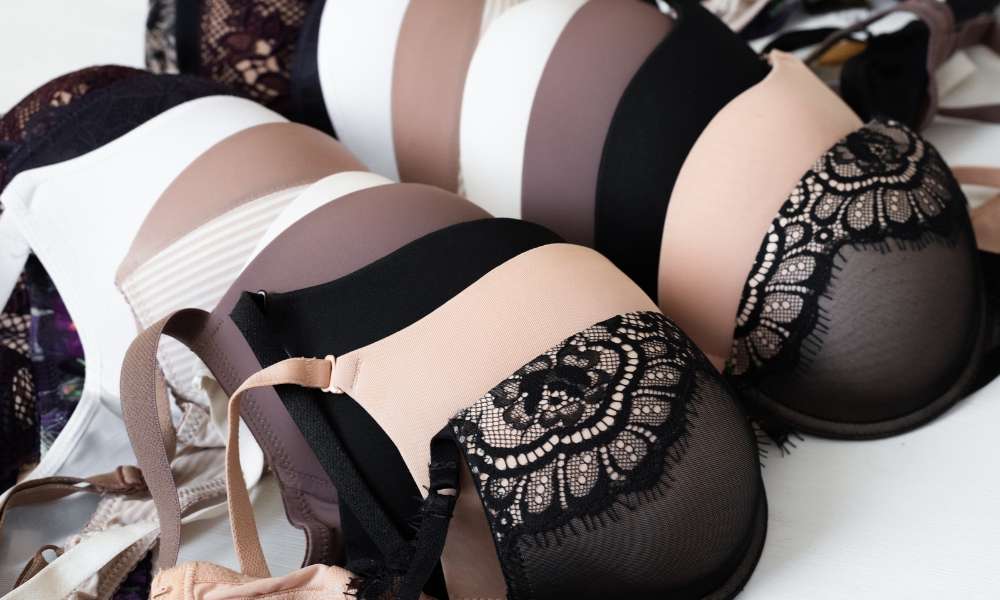Guide to Female See-Through Underwear: Materials, Fit, Care, and Styling
See-through underwear has become increasingly popular among women seeking both comfort and aesthetic appeal. This intimate apparel category offers various levels of transparency, from subtle mesh panels to fully sheer fabrics. Understanding the different aspects of transparent lingerie helps women make informed choices about materials, fit, and styling options that suit their preferences and needs.

See-through underwear represents a sophisticated category of intimate apparel that combines functionality with visual appeal. These garments range from subtly transparent mesh inserts to completely sheer fabrics, offering women diverse options for both everyday wear and special occasions.
Understanding Transparency Levels and Design Options
Transparent underwear comes in various opacity levels, each serving different purposes and preferences. Lightly sheer fabrics provide a hint of skin visibility while maintaining coverage, making them suitable for daily wear under clothing. Medium transparency levels offer more pronounced see-through effects, often featuring strategic placement of sheer panels combined with opaque sections. Fully transparent designs create maximum visual impact and are typically reserved for intimate settings.
Design variations include all-over sheer construction, mesh panel inserts, lace overlays, and cut-out details. Some styles incorporate decorative elements like embroidery or beading on transparent backgrounds, while others focus on clean, minimalist aesthetics. The placement of sheer sections varies significantly, with options including side panels, back details, front accents, or complete transparency.
Materials, Breathability, and Skin-Sensitivity Considerations
The choice of materials significantly impacts both comfort and appearance in see-through underwear. Common fabrics include fine mesh, tulle, organza, and specialized synthetic blends designed for stretch and durability. Natural fibers like silk and cotton blends offer superior breathability but may be less durable than synthetic alternatives.
Breathability becomes particularly important in transparent designs, as these garments often feature less fabric coverage. Mesh constructions typically provide excellent air circulation, while solid sheer fabrics may retain more heat. Moisture-wicking properties vary by material, with synthetic blends often outperforming natural fibers in this regard.
Skin sensitivity considerations include fabric texture, seam construction, and chemical treatments. Individuals with sensitive skin should prioritize hypoallergenic materials and flat-seam construction to minimize irritation. Some transparent fabrics may feel rougher against skin than traditional underwear materials, making fabric selection crucial for comfort.
Fit, Sizing, and Comfort Guidance
Proper fit becomes even more critical with see-through underwear, as transparency can highlight fit issues more prominently than opaque garments. Standard sizing charts apply, but the stretch properties of sheer materials may differ from regular underwear fabrics. Many transparent styles feature less structured support, requiring careful attention to band width and elastic tension.
Comfort factors include waistband width, leg opening design, and overall coverage area. Wider waistbands typically distribute pressure more evenly, while narrow bands may create more pronounced lines under clothing. The cut and style significantly impact comfort levels, with high-cut designs offering different fit characteristics than full-coverage options.
Trying on different styles helps determine personal preferences, as individual body shapes respond differently to various transparent underwear designs. Some women prefer the security of partial transparency, while others find full sheer styles more comfortable due to reduced fabric bulk.
Care and Maintenance to Preserve Shape and Sheerness
Proper care extends the lifespan of see-through underwear and maintains its appearance. Hand washing in cool water with gentle detergent preserves delicate fabrics and prevents snags or tears. Machine washing should use delicate cycles with lingerie bags to protect against damage from other garments or hardware.
Drying methods significantly impact fabric integrity. Air drying prevents heat damage that can cause shrinkage or fabric degradation. Avoiding direct sunlight helps prevent color fading and fabric weakening. Machine drying on low heat may be acceptable for some synthetic materials but should be avoided for natural fibers and delicate constructions.
Storage considerations include proper folding or hanging to prevent creasing and fabric stress. Separating transparent pieces from items with hooks, zippers, or rough textures prevents snags. Regular inspection for wear signs helps identify when replacement becomes necessary.
| Brand | Style Type | Material | Price Range |
|---|---|---|---|
| Calvin Klein | Mesh Panel | Nylon/Spandex | $15-25 |
| Victoria’s Secret | Lace Overlay | Polyester/Elastane | $12-30 |
| La Perla | Full Sheer | Silk Blend | $80-150 |
| Hanky Panky | Signature Lace | Nylon/Spandex | $20-35 |
| Agent Provocateur | Designer Mesh | Various Blends | $50-120 |
Prices, rates, or cost estimates mentioned in this article are based on the latest available information but may change over time. Independent research is advised before making financial decisions.
Styling, Layering, and Appropriate Occasions
Styling see-through underwear requires consideration of both the garment itself and the outer clothing worn over it. For everyday wear, subtle transparency works well under most clothing types, while more pronounced sheer styles may show through lighter fabrics. Layering techniques can modify the visibility level, with slip dresses or camisoles providing additional coverage when desired.
Occasion appropriateness varies widely based on transparency level and personal comfort. Lightly sheer styles suit professional environments when properly layered, while highly transparent options are typically reserved for personal or intimate settings. Understanding the difference between various transparency levels helps in making appropriate choices for different situations.
Color coordination affects both appearance and visibility under clothing. Nude and skin-tone shades minimize visibility lines, while contrasting colors create more pronounced effects. Darker outer garments generally conceal transparency better than light-colored clothing, allowing for more adventurous underwear choices without visibility concerns.
See-through underwear offers women diverse options for expressing personal style while maintaining comfort and functionality. Understanding materials, fit requirements, care needs, and styling possibilities enables informed decisions that enhance both confidence and satisfaction with these specialized garments.




